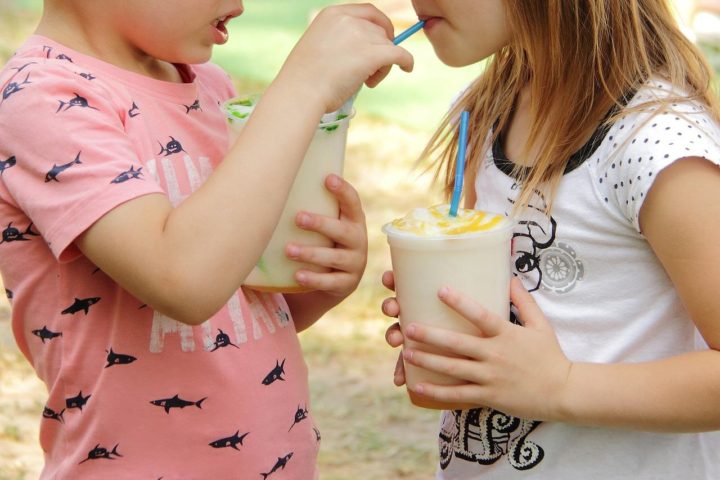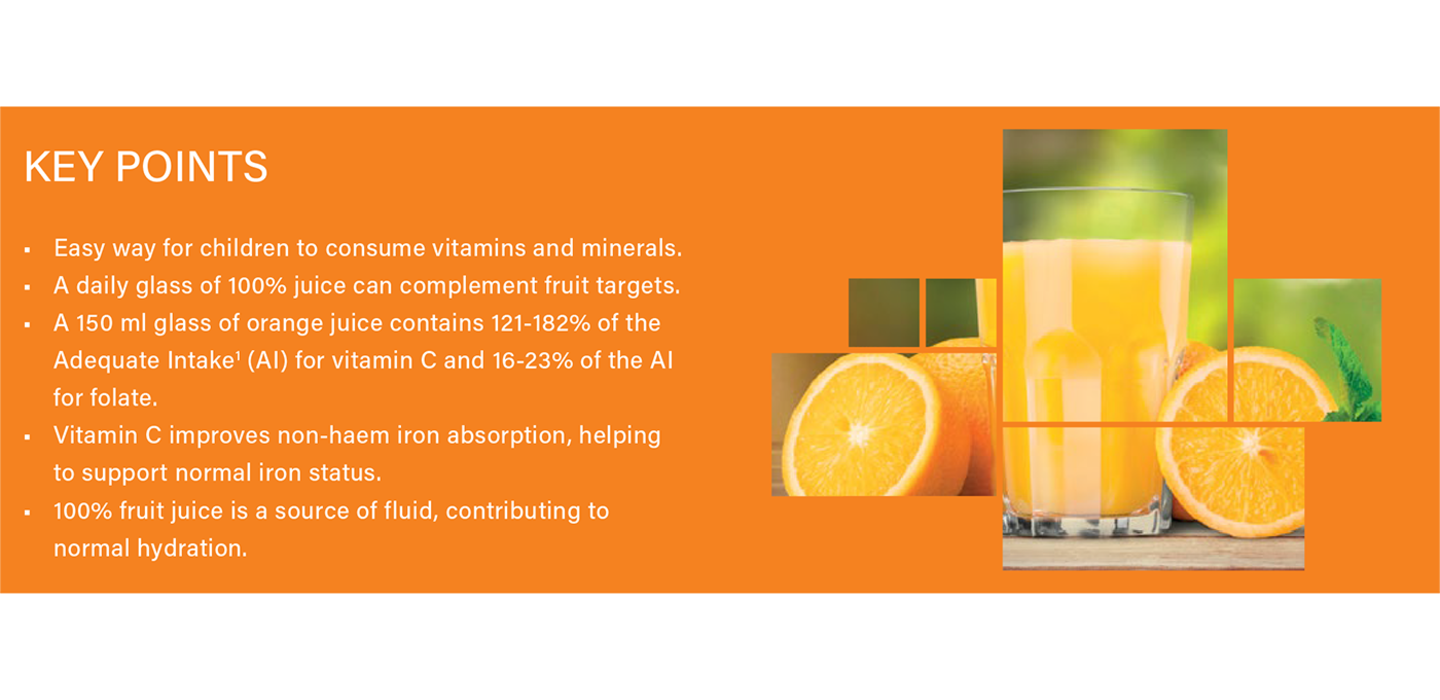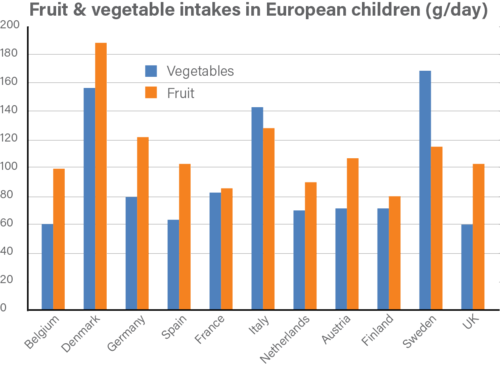Fruit juice across the lifecycle: children


NUTRITION REQUIREMENTS AND CHALLENGES

Childhood is the period from late infancy to the beginning of adolescence. During this time, children increase their repertoire of foods and drinks, improving the variety and options for nutritional intake. This is necessary for growth, mental development and social/ cultural development. Dietary issues include:
Low fruit intake – European surveys suggest that fruit and vegetable intakes are low across the board among children and young people compared with population recommendations of 400-500 g per day. As shown in the chart below, intakes also vary considerably between countries. The WHO reported that, on average, less than half of children eat fruit on a daily basis. A small glass of 100% fruit juice counts as a portion of fruit in many countries
Fussy eating – While most children eat too few fruits and vegetables, this is especially the case for preschool children and those who are picky/fussy eaters or food neophobic. These groups also tend to have diets that are lower in vitamin C. For fussy eaters who are reluctant to eat whole fruits or vegetables, 100% juices can offer an alternative source of vitamins and minerals. For example, a small glass of orange juice (150 ml) provides the European daily vitamin C requirement for children.
Poor iron status – A review of 44 studies conducted in 19 European countries found that, while average iron intakes in babies and toddlers were close to recommended values, significant proportions of children had inadequate intakes, ranging from 10% in the Netherlands up to 50% in Austria, Finland and the United Kingdom. Prevalence of iron deficiency was around 5% in Western Europe but up to 50% in Eastern Europe.
Constipation – The North American Society of Pediatric Gastroenterology, Hepatology and Nutrition guideline on constipation suggests taking advantage of the sorbitol content of certain juices for managing the risk of constipation in children. Prune, pear and apple juices may help increase the frequency and water content of stools for young children with constipation.
100% FRUIT JUICE: BENEFITS FOR CHILDREN
100% ‘pure’ juice is made by squeezing or crushing fruit. This means that the nutritional composition reflects that of the fruit used in the processing. Nutrient values are similar whether juice is ‘from concentrate’ or ‘not from concentrate’. It is prohibited by European law to add sugars to 100% fruit juice regardless of the production method. 100% fruit juices are not the same as juice drinks or soft drinks, which may contain added sugar or artificial sweeteners.
The nutritional composition of 100% orange juice per 100 ml is shown below. One 150 ml glass contains 60 kcal (calories), 13.6 g of naturally occurring sugars and 55 mg of vitamin C. Values in blue represent official ‘source of’ claims that can be made in Europe.

The nutrients found in 100% fruit juice have recognised roles in supporting normal health, as per EU authorised health claims.
- Folate supports normal psychological function and immune function.
- Vitamin C supports normal teeth, skin and gums and supports bone health by contributing to normal collagen. Vitamin C also increases iron absorption from non-haem sources such as green leafy vegetables and fortified foods.
- Potassium contributes to normal functioning of the nervous system and supports normal muscle function and blood pressure. In the body, 100% fruit juice behaves differently to sugar-sweetened soft drinks in terms of glycemic control, so it is not correct to classify them in the same way. Evidence in children suggests that:
- 100% fruit juice was not associated with any change in body mass index z-scores in children aged one year and above in a review of eight prospective cohort studies involving more than 34,000 children.
- Consuming 100% orange juice relates to a higher intake of vitamin A, vitamin C, folate and magnesium, according to a secondary analysis of the US NHANES study. In addition, there was no difference in risk of obesity in children who consumed fruit juice versus non-consumers. Interestingly, 100% fruit juice consumers had higher fruit intakes and scored better on the Healthy Eating Index 2005.
INCLUDING FRUIT JUICE IN THE DIET

Since vitamin C enhances the bioavailability of non-haem iron (for example from fortified foods, supplements and green leafy vegetables), fruit juice is best consumed with a meal. This can also minimise any potential impact on tooth enamel and is the preferred option for dentists.
TIPS FOR PATIENTS
Fruit Juice Matters has created a linked one-page leaflet, Why fruit juice? FOR CHILDREN, which you may find useful to give to your patients. Click here to download a copy.

